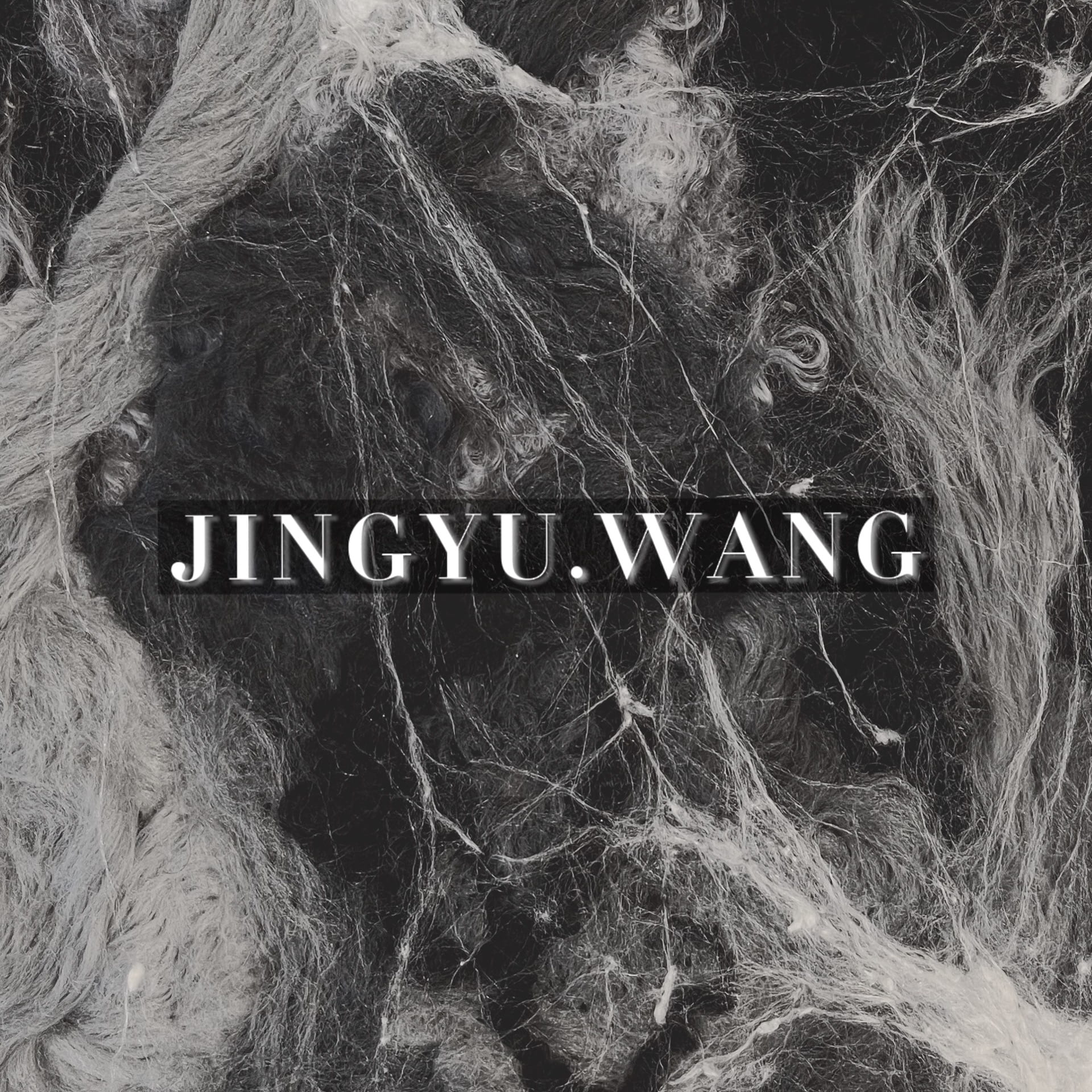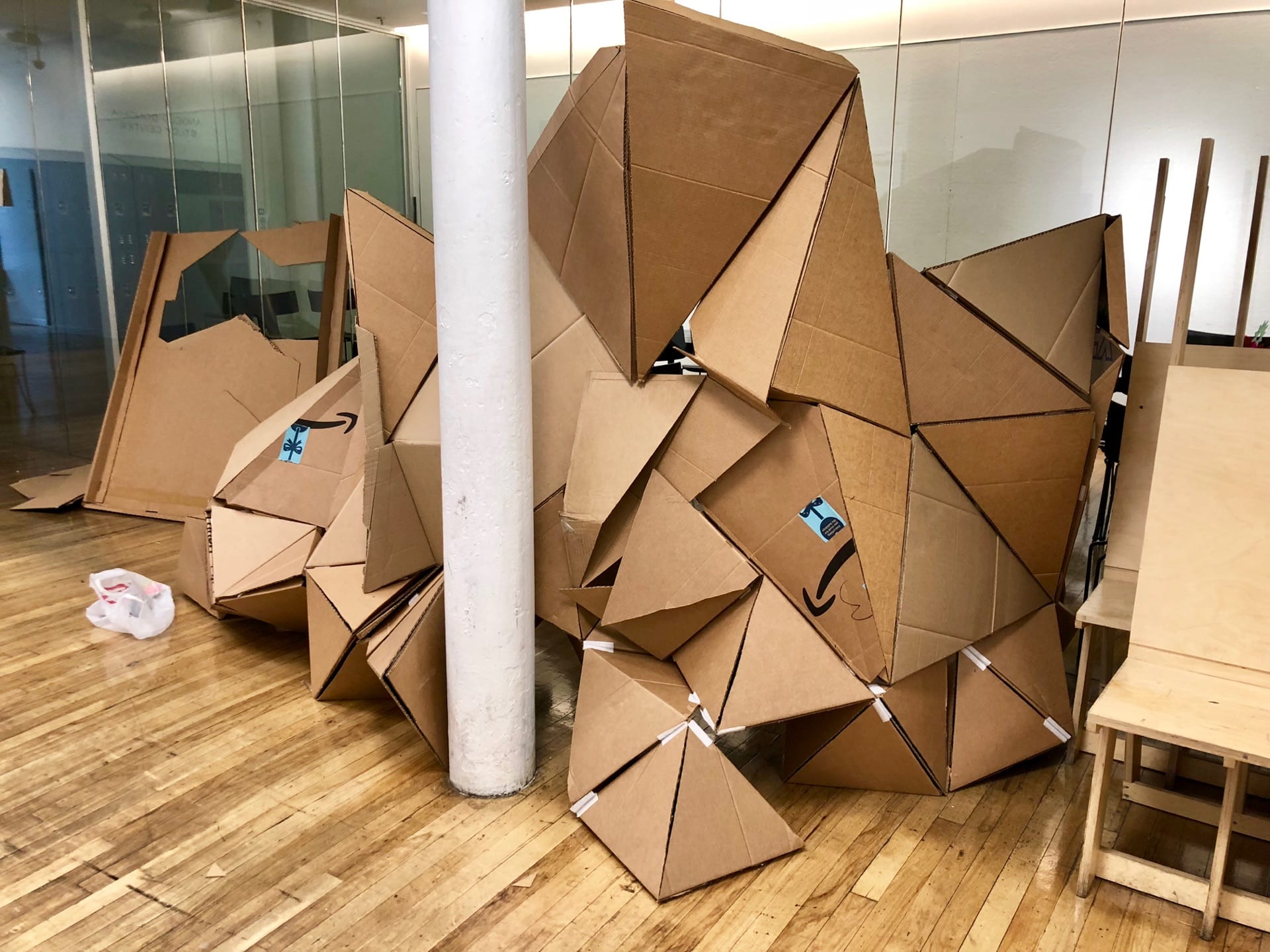The final project titled “The Artificial Nature” is a temporary structure built by Velcro and used cardboards that interrupts the current design studio environment. The concept of nature is introduced by projecting image of natural sites on to the inner walls of the structure. With the help of the semi-confined, compact space we constructed, we hope our viewers can experience a sense of privacy and enclosure provided by nature.
Our concept first evolved as a tunnel with opening on both sides of the site we chose. The idea was to take advantage of the current architectural features such as the pillars and benches as the structural support of our installation.
However, as we started to consider the possibility of including technology in our work – the projectors and VR – a darker and more enclosed space seem to be more suitable for the task. Therefore, we decided to close one end of the tunnel that turned the structure into almost a small cave. The second step was to choose the geometric shape that would be majorly implemented.
After considering the stability and the irregular effect we wanted to create, our group chose triangles as the main geometry and instead of having the whole structure built in single layer cardboard surfaces, we decided to construct the base line in solid pyramids.
Because of the volume of the structure we were building, we would need the whole architecture to be temporary – meaning it should be able to disassemble and reassemble. This structural characteristic also correspond with the natural environment, which is always transforming and reshaping spontaneously. The color of cardboards not only is reminiscent of the studio environment but also woods and earth in nature. It does not weigh so heavily but is also versatile enough to be shaped or to maintain a proper rigidity.
At the same time, we started to think about ways of building up. The precedents of the Drop City in the 1960s gave us the idea of a less calculated and more randomized structure. Looking at the “Zome” model that replaced the regular geodesic dome in the Drop City architectures, our group decided to cut out individual triangular pieces and work the structure out by exploring the many possibilities of connecting the pieces together. Interestingly, this decision lends the structure a jagged and rough appearance, almost like it is growing out from the back window panels.

Not every triangle we cut out found its fitted spot, so eventually we had to measure some angles and make some customized pieces to cover some areas, but overall, we proved it is possible to construct an inhabitable place in 2 weeks of time. After we finished with the structure, we brought in the video we made and tested out the projector. The irregular wall distorted the video and adds an intricate abstraction to the image, which ultimately draws viewers in. The sound produced by speaker was enhanced by the cave and creates an immersive experience.

However, on the final presentation date, the structure collapsed because one of the benches that provided structural support was moved slightly away from the structure wall. Although this took away the opportunity for the reviewers to experience what we had experienced on the previous day, it clearly gave us a time to rethink the whole project and many opportunities in which it can be improved for the next installation. The first and foremost would be to put down signs that indicate clearly what in the environment are vital and untouchable for the installation, which we did not do successfully this time. Second of all, our given time frame must be considered more carefully and a better scaled project could be implied. Thirdly, a textural experience can be added to the installation, taking advantage from the dark, enclosed surroundings we built (ex. have actual soil or the smell of flowers) without making direct image of nature that defines strictly the functional use of our site as a projection screen.













